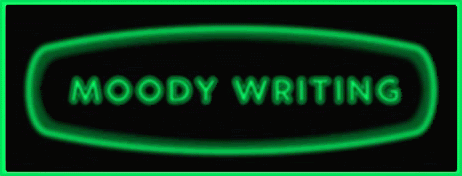It’s a simple task to explain what
throughline means. It’s making sure each scene feels connected to the main
story. Whether it’s pivotal or not, even if it’s a scene without any of the
main characters in it, or part of a sub-plot, if it starts to feel unconnected the
reader will lose interest, and any momentum or tension you’ve built up will
dissipate.
What isn’t so simple is to
explain how to make sure YOUR story has a strong throughline.
The problem is that as a reader it’s
obvious when you’re confused or when you’re lost. But as the writer, the story
already exists in your head. So it all makes sense to you no matter where you
are in the story. You understand why characters do what they do, even if it
isn’t written down.
The key to throughline is to know
what the characters want and what the story is about. If you are the sort of
writer who wings it and hopes for these things to manifest as you write, that’s
okay, but once you have your first draft down you have to go back and work out
what your throughline is and insert it where it’s missing.
The hardest part is to keep the
throughline present when your character is off on a tangent or dealing with a
sub-plot. Or when you are in the POV of a
different character. If you’re not writing about the main storyline, how
do you keep it alive in the mind of the reader?
The answer is to use your skills
as a writer to work in hints and reminders. Using subtext, metaphors,
foreshadowing, or simply work it into thoughts or dialogue. Unless your story
is very basic and simple, the throughline is something you will consciously have
to look for and adjust. It will not simply fall into place for you. Scenes are
like a barrels floating in a river. If you tie them together you can use them
as a raft. If you don’t tie them together, they aren’t naturally going to stick
together. They may all go roughly in the same direction, but not in a way that’s
useful to you.
Make no mistake, you need to keep
that throughline present and the reader tethered to it. Throughline is the
heartbeat of a story. If you lose the throughline, you lose the story.
If a mother has lost her child to
a kidnapper and the police won’t help, so it’s up to her to find her kid, then obviously she has that on her mind
all the time. But does that mean she has to act like she’s freaked out 24/7?
When she stop up to gas up her car, and goes in to pay, maybe buy some food,
can’t she just act normal in front of these strangers, as people do when they
have problems?
And of course she can. But
because you, as the writer, have knowledge of her distress, because you believe
and accept that she is all broken up, you have an underlying sense of her pain
that the reader can easily misplace if you don’t provide guidance.
That’s why you’ll see scenes
where the bereft mother will suddenly see a mother with her child, and her face
will register the loss for the benefit of the audience.
Of course, you don’t have to be
quite as blunt about it as my ‘movie of the week’ example, but your story will
benefit if you find ways to reinforce the central premise of your story.
Clearly that’s a high drama type
of example, but the same holds true for any kind of story. If Jane meets her
new boss and has a thing for him, even though he threatens to fire her, and
then she has a scene visiting her Dad who has Alzheimer’s, after which she talks
to her best friend on the phone about a blind date her friend’s keen to set her
up on, you may see all these things as a way to introduce us to different side’s
of Jane’s life. Nobody cares. We don’t know Jane, she’s just some random person
to us.
If you start with the cruel but
handsome boss, then she complains to her Dad about her crappy love life and her
Dad has no idea who she is but offers her advice he would give to his daughter
if he had one, and then her friend suggests a blind date but she refuses until
her boss is on the other line insisting she works late, and then she takes the
blind date out of spite – then you can see this is a story about Jane’s
unsuccessful love life.
Any scene can be connected to that
throughline, even if it’s subtle, as long as you are aware of what the story is
really about. Being able to link up scenes so they don’t feel like random
moments from a life is key to making a story flow and take your readers
with you as you float downstream.
If you found this post to be of some use, please give it a retweet. Cheers.








































































































18 comments:
Excellent tips! I'd like to think I keep the story going throughout, but you're right - what is clear in my mind may not be clear to the reader.
Not heard that term before, but the concept makes sense.
I like your "Jane" example. The first version feels like a lot of disconnected scenes. The second version ties them together nicely into the central story.
Awesome post. I've read stories that meander off and they feel disconnected. It isn't the easiest thing to do!
@Alex-it's probably one of th emost common problems with early drafts.
@Botanist-cheers.
@Christine-a strong throughline can male all the difference.
Jane's love life is a brilliant example of tying everything up to a main throughline. Great post!
J.C. Martin
A to Z Blogger
I love this - "Make no mistake, you need to keep that throughline present and the reader tethered to it. Throughline is the heartbeat of a story. If you lose the throughline, you lose the story."
One of the things I find beneficial in most of these posts is that it gets me thinking more like a reader than a writer. Sure, as a writer I know the story, I see the throughline, I know something exciting is going to happen later, etc but the reader doesn't. That's the key.
Great tip. My beta readers told me that in my sequel, there were many scenes that needed to be cut because they added nothing to the story. But what was really being talked about was the throughline. They couldn't see how the things went together and I did. So I ended up not cutting but adding to the story to improve the job of tying everything...all the characters and scenes...together. It's really made the word count balloon. I'll have to edit to decrease size but it was apparent that this kind of attention was needed.
Very useful article. The examples are excellent.
GREAT post! I read it twice. Loved your barrel imagery. You are right it IS necessary evil in writing to keep it all together and keep the reader reading.
ScribblesFromJenn
Happy A to Z-ing!
@JC-cheers.
@Madeline-it's one of the hardest things to convey to an aspiring writer (I've found).
@Michael-that's a great example of how readers who spot a probelem are usually right, but it's up to the writer to figure out why and what to do about it.
@Unknown-thanks.
@Jenn-you have to think it through, which is what a lot of writers were hoping to avoid. There's no avoiding it.
Great post, great points, and I absolutely loved the barrels on water metaphor. Dead on!
My first day back to blogging and I find another Moody gem to add to my "study and learn from" folder. Thanks.
@Vero-cheers.
@LD-great to have you back.
And this is why, between drafts 1 & 2, I will step back and chart out all my characters' motivations from scene to scene. I need to ensure the readers know what I know... or rather, what I want them to know.
That, and I'll be reworking some scenes to re-tether them, because the throughline isn't even in view, let alone within reach. Great post, Moody.
@Nate-cheers. I think the amount of work required after the first draft is what most new writers don't expect and are often scared off by. Has to be done.
Thank you for some excellent tips & I'd love to get more into writing :)
Really helpful. Thanks. A lot.